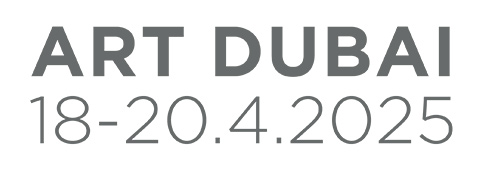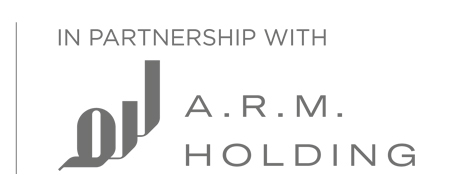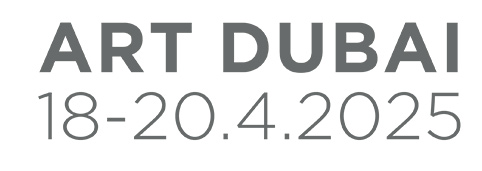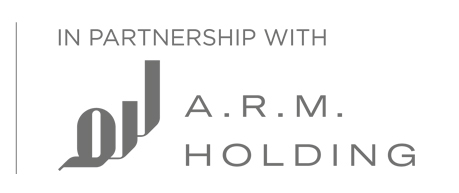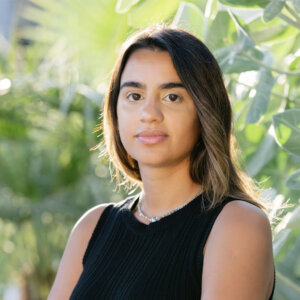Gabriel Alonso is a visual artist and researcher investigating contemporary relations between fiction and materiality, the human and the artificial, and the natural and the cultural, whose work has been internationally exhibited and published. In 2020 he founded the Institute for Postnatural Studies, a centre for artistic experimentation to explore and problematize postnature as a framework for contemporary creation.
Dr. Nezar Andary‘s films have screened all over the world, included his last one award winning film, Unlocking Doors of CinemaI(2020). A professor of film and literature, he has been the artistic director of Al Sidr Environmental Film Festival and Sharjah’s House of Wisdom Performing Books season. He is the co-editor of a book series with Palgrave Macmillan entitled Focus on Arab Cinema.
Çelenk Bafra was the director of SAHA and SAHA Studio until Feb 2024. She was the curator and director of exhibitions at Istanbul Modern, for which she curated “Till It’s Gone”, an exhibition on ecology and sustainability. She’s the producer of an arts program on Açık Radio, advocating cultural rights and climate justice.
Samir Bantal is director of AMO, the architectural think-tank of OMA. Samir, together with Rem Koolhaas, was the co-curator of the 2020 Exhibition Countryside, the Future at the Guggenheim Museum that opens in Doha, Qatar in 2024. With research at its core, AMO’s work spans architecture, culture, media, and technology.
Nadia Christidi is an MIT PhD candidate in History, Anthropology, and Science, Technology, and Society and arts practitioner. She researches how cities in drylands, including Dubai, are planning for the future of water as the climate changes. Nadia received the Art Jameel Arts Research and Writing Commission and was a TBA-21 Academy Ocean Fellow.
Dana Dawud (b. 1992) is a Dubai-based artist and writer, Dana’s research and practice interrogate the intersections between the digital and the real.
Reema Salha Fadda is a writer, editor and academic whose work engages with the political economy of cultural production, focusing mainly on Palestine and the broader region. Her writing has been commissioned by leading international publications and she has programmed cultural events across historic Palestine, Cairo, Amman and London. Shed developed a lecture series on Arab cultural politics at the University of Oxford and is currently a lecturer on the MFA programme at NYU, Abu Dhabi.
Asunción Molinos Gordo is a research-based artist strongly influenced by disciplines such as anthropology, sociology and cultural studies. The main focus of her work is contemporary peasantry. She won the Sharjah Biennial Prize 2015 with her project WAM (World Agriculture Museum) and represented Spain official section at the 13th Havana Biennial 2019.
Anne Holtrop (1977 / Netherlands) is an architect based in Muharraq (BH) and Amsterdam (NL). Key projects from his studio are the Museum Fort Vechten, the National Pavilion of Bahrain, the Green Corner Building, and the Misk Art Institute in Riyadh. He is a professor at the ETH in Zurich.
Maya El Khalil’s curatorial work addresses the intersection of art, community-driven practice and cultural exchange, with particular expertise in the contemporary artistic context of the Gulf. The environmental and climate emergency has been the focus of her most recent exhibitions and multidisciplinary projects, such as the ongoing digital platform Take Me to the River, in collaboration with Goethe-Institut and the Prince Claus Fund.
El Khalil serves on the international advisory board of the Prince Claus. She was founding director of Athr Gallery (2009-2016).
Nadine Khalil is an independent researcher and curator. Her practice looks at intersections between performativity and technology. She is currently working on a curatorial series of artist-centered narratives around machinic embodiment and radical performance. She is the former editor of Dubai-based contemporary art magazine, Canvas (2017-2020) and Beirut-based culture magazines A mag and Bespoke (2010-2016).
Munira Khayyat teaches anthropology at New York University Abu Dhabi. She is the author of A Landscape of War: Ecologies of Resistance and Survival in South Lebanon (University of California Press 2022). She has taught at the American University in Cairo and the American University of Beirut and was a member of the School of Social Science at the Institute for Advanced Study in Princeton.
Michael Marder is IKERBASQUE Research Professor in the Department of Philosophy at the University of the Basque Country (UPV-EHU), Vitoria-Gasteiz, Spain. His writings span the fields of ecological theory, phenomenology, and political thought. He is the author of numerous scientific articles and monographs, including Plant-Thinking (2013); The Philosopher’s Plant (2014); Dust (2016), Energy Dreams (2017), Heidegger (2018), Political Categories (2019), Pyropolitics (2015, 2020); Dump Philosophy (2020); Hegel’s Energy (2021); Green Mass (2021), Philosophy for Passengers (2022), The Phoenix Complex (2023), Time Is a Plant (2023), and, with Edward S. Casey, The Place of Plants (2023). For more information, consult his website michaelmarder.org.
Monira Al Qadiri (b. 1983, Dakar, Senegal) is a Kuwaiti artist educated in Japan and now living in Berlin. Spanning sculpture, installation, film and performance, Al Qadiri’s multifaceted practice is mainly based on research into the cultural histories of the Gulf region. Her interpretation of the Gulf’s “petro-culture” is manifested through speculative scenarios that take inspiration from science fiction, autobiography, traditional practices and pop culture, resulting in uncanny and subversive works.
Nora Razian is Deputy Director and Head of Exhibitions and Programmes at Art Jameel, where she oversees the exhibitions across both Jameel Arts Centre in Dubai and Hayy Jameel in Jeddah, as well as public programmes. Previous roles include Head of Programmes and Exhibitions at the Sursock Museum, Beirut, and Curator of Public Programmes at Tate, London.
She is the commissioner and editor of several publications including Monumental Shadows (2023) a multi-contributor volume exploring the politics of heritage and museology today, and Pacita Abad: I Thought the Streets Were Paved with Gold marking the artist’s exhibition at the Jameel Arts Centre. She is co-editor of Elements for a World (Sursock Museum, Beirut), a series of five publications featuring specially commissioned texts and visual contributions responding to the current climate crisis through scientific, poetic, political, and speculative contributions, and The Future Citizen Guide (Tate, London), a series of contributions by artist and curators exploring changing notions of citizenship.
She has served as a curatorial advisor for the 59th Venice Biennial (2020-2022) and sits on several selection committees.
Dr. Stephanie Rosenthal serves as Director of the Guggenheim Abu Dhabi Project, appointed by Solomon R. Guggenheim Foundation. From 2018 to 2022, she was Director at the Gropius Bau in Berlin, notably the first woman to direct the institution. Throughout her career Rosenthal held key roles, such as Chief Curator at the Hayward Gallery in London and Curator at the Haus der Kunst in Munich. With a specific interest on performative practices, she organized influential exhibitions like Move: Choreographing You (2010), Art of Change: New Directions from China (2012), and Garden of Earthly Delights (2019).
Jack Self (1987) is an architect and writer based in London. He is Director of the REAL foundation and Editor-in-Chief of the Real Review. In 2016, Jack curated the British Pavilion at the Venice Architecture Biennale. He is Master of Diploma Unit Six at the Architectural Association. Jack’s architectural design focuses on alternative models of ownership, contemporary forms of labour, and the formation of socio-economic power relationships in space.
Ahmed and Rashid bin Shabib are both urbanists and researchers. For more than a decade, their magazine, Brownbook, has explored cities across the Middle East and North Africa, with more than a million copies in circulation. They were nominated for the Aga Khan Awards for Architecture in 2010 and 2018. Additionally, they edited and wrote the publication “Anatomy of Sabkhas” for the National Pavilion UAE, which won the Golden Lion for Best National Presentation at the Venice Biennale in 2021. They continue to lecture and teach at the Architectural Association, New York University, Zayed University, and Boisbuchet. They are graduates of the University of Oxford, specializing in urbanism.
Jakob Kudsk Steensen is an artist working with environmental storytelling through simulation technology and large-scale installations. He creates poetic interpretations of overlooked natural phenomena in video, photo, audio, game and virtual reality formats. His projects use intuitions, memories and imaginations to form experiences allowing deeper connection with real-world environments.
Isaac Sullivan’s research interests include artificial intelligence, sound art, and the problematics of space and place. Exploring ecological thought and emerging technologies, his work revisits cybernetics and engages AI’s impact on images, data, territory, and observation through video, performance, and installation. He is co-founder of the artist collective, Cybernetic Listening.
Y7 are a UK-based post-disciplinary duo specialising in the use of AI for A/V works alongside a written practice of cultural criticism. They collaborated with Shumon Basar on his Lorecore Trilogy and have written for Flash Art & 032c. Their latest film Report 5923 was made using generative AI tools.
